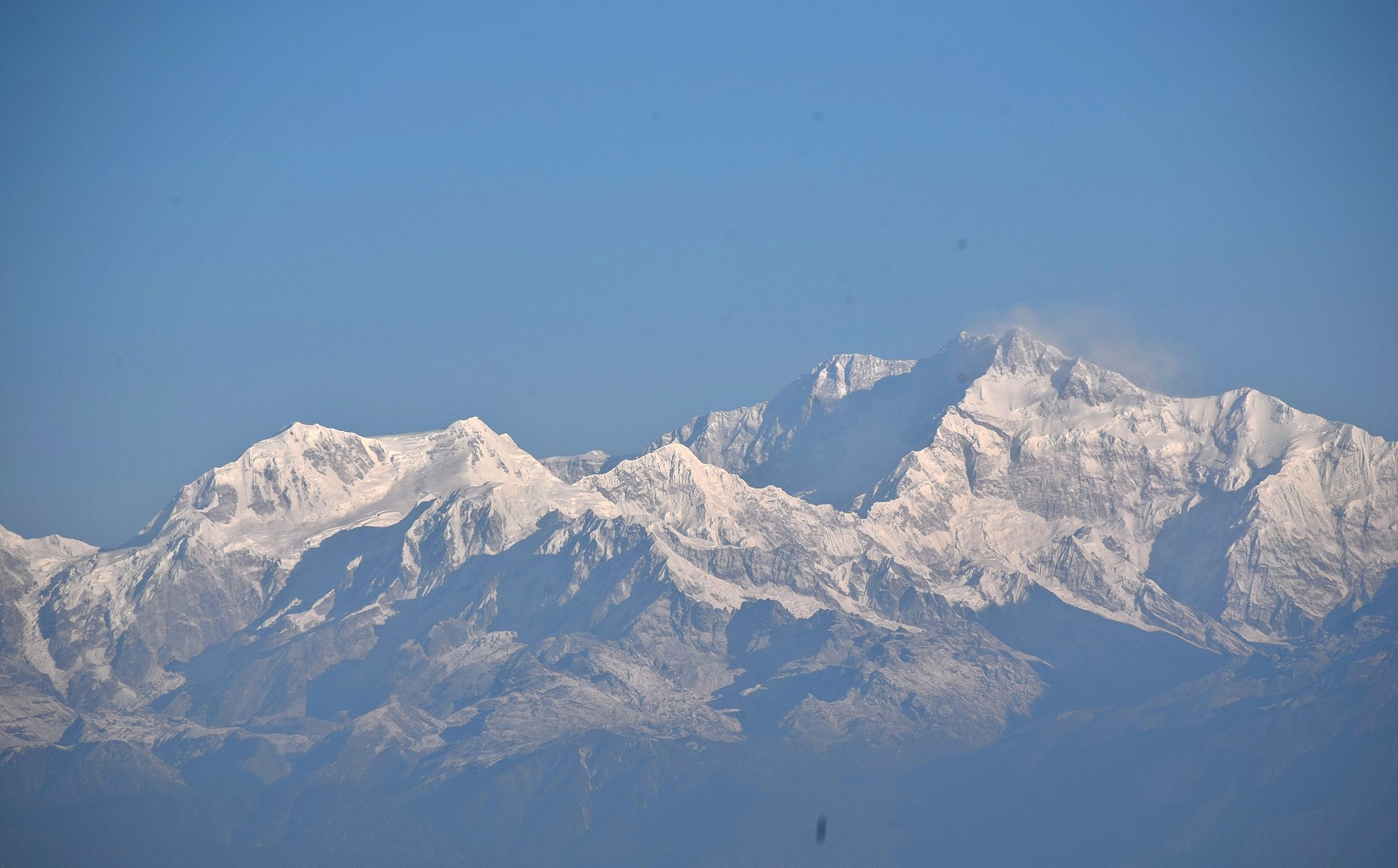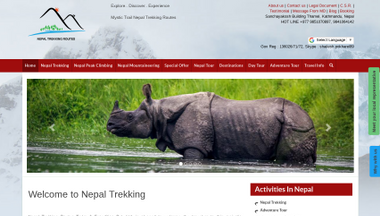Here goes the second take of the huge spring 2010 Everest and Himalaya spring 2010 season chronicle, by stats expert and ExplorersWeb contributor Rodrigo Granzotto Peron. Today, the lights and shadows of the tight race between Edurne Pasaban and Oh Eun-Sun for the first female 14x8000ers ascent.
Everest & Himalaya 2010 Season’s end Chronicle: part 2
by Rodrigo Granzotto Peron
2. THE FINAL CHAPTER OF THE WOMEN’S RACE
I–Background of the Final Chapter
Not long ago Edurne Pasaban (SPA) was pretty sure she would be the first female climber to summit all fourteen 8000ers. With Gerlinde Kaltenbrunner (AUT) and Nives Meroi (ITA), her closest competitors, aiming difficult routes and winter climbs instead of simply grabbing 8000er by 8000er, Edurne was meant to be the first. 
This certainty changed from 2008 onward when two new faces from Asia began to be noticed.
South Korean female climbers Oh Eun-Sun and Go Mi-Sun became 8000ers very fast. Go summited ten different main 8000ers in about two years, while Oh summited 11 in less than three years.
What was clear and sure for Edurne started to fade when she visualized the South Koreans approaching more and more on her numbers; then, on August 3, 2009, Oh Eun-Sun grabbed Gasherbrum I, therefore surpassing the famous Spanish climber. Go Mi-Sun would also achieve this mark, but a sad fatal fall on Nanga Parbat took her life.
Oh Eun-Sun told Chosun newspaper in March 2009: “Since there is no woman in the world who has climbed all 14 summits, I hope I will be the first”. One year later her words become a reality.
II–First Place (Or not?)
On April 27 Oh Eun-Sun stood on the top of Annapurna and became the first female climber to summit all 8000ers. The event was broadcasted live on KBS TV in what was the first television broadcast from the top of the most dangerous 8000er of all. It was the golden moment for this incredible South Korean who broke several records in the past few years: [1] first woman to summit four different main 8000ers in one calendar year (2008); [2] first female climber to TOP THREE (EV, K2, and KG) and to TOP FIVE (EV, K2, KG, LH, and MK); [3] first climber to summit four different main 8000ers in two consecutive years; and [4] first woman to summit all 14 main 8000ers! 
Oh’s first summit was Gasherbrum II (1997), which she topped out with two legends from homeland: Park Young-Seok and Um Hong-Gil. After some years, she grabbed Everest (2004). After Shishapangma (2006), she pressed the “turbo button” and conquered Cho Oyu and K2 (2007), Makalu, Lhotse, Broad Peak and Makalu (2008), Kangchenjunga, Dhaulagiri, Nanga Parbat and Gasherbrum I (2009), and Annapurna (2010). Her most regular climbing mates were Sherpas. First, she teamed-up with Thilen (from 2006 to 2008), then recently teamed up with Dawa Wangchuk and Pema Tshering (from 2008 to 2010). She used oxygen on EV and K2, but the others she went NOOX.
While Korea was filled with joy and happiness things were a little different in the largest country of the Iberian Peninsula.
Al Filo’s top climber Ferran Latorre published on his blog some doubts about Oh’s summit on Kangchenjunga. The main arguments are:
1. The summit pic was not taken on the highest point. The pic shows Oh on bare rock, while other pictures this year presents climbers on a snowy summit. Ferran concluded: “looking at the released photos of the ‘supposed’ summit of Kangchenjunga, I doubt she summited”.
2. The Sherpas that accompanied Oh would said to Edurne, in Annapurna BC, that the South Korean did not top out.
3. Some climbers say that it was not possible for a climber to go from 8,400 meters to the summit and back in just three hours and 40 minutes–that was the time Oh took to cover this distance, according to binocular watchers in Kangchenjunga’s BC.
What started as a simple comment on a personal website soon became a tsunami of catastrophic proportions on Spanish news and then around the globe.
III–The Darkest Hour of the Race:
The events that followed the declarations of Latorre were surely the darkest hour of the race.
Several accusations emerged–some of which the South Koreans could not personally defend because they were on the summit push of Annapurna–which included:
1. Complaints about the South Koreans on the “fixed ropes case” and that they did not properly manage their own garbage, therefore, polluting the slopes of Annapurna.
2. Montagnes Magazine presenting doubts about Oh’s summits, not only on KG, but also on Everest (2004), Cho Oyu (2007), Lhotse (2008) and Broad Peak (2008).
3. The declaration by Edurne Pasaban that the Sherpas of Miss Oh assured that she did not reach the highest point of Kangchenjunga. Even though Edurne was pressed to reveal the names of the Sherpas at first, she did not. However, afterwards, she did say: “The names are Dawa Wangchuk, Pema Tshering, Tshering Nurbu, Dawa Sange, Ong Dorje, Chumbi and Phu Dorje.” (It is important to point out that Edurne never said that “this Sherpa said this” or that “this Sherpa said that”–she only released the names in general.)
4. April 26 interview on Desnivel with Juanito Oiarzabal: “I believe she did not summit.”
5. April 28 interview on Desnivel with Edurne Pasaban: “The picture was not taken on the summit” and “the truth can be bought and there is a chance that the Sherpas [of Miss Oh] ‘go this way’.”
6. Juanito declared that “the solidarity on mountaineering is lost. Even more in the case of the South Koreans.” The critics were poised in the event of Tolo Calafat’s death on Annapurna. On that occasion, Oiarzabal thought that Oh Eun-Sun could have, but did not, sent her Sherpas on a rescue mission. Later, Juanito regretted his words when the South Korean female climber stated that the Sherpas were too tired to participate in the rescue and that it would be suicide to send them up again.
7. May 4 interview on Spiegel with Hans Kammerlander: “She’s a flash in the pan” and “She was taken to the top by her team.”
All the critics lead Miss Elizabeth Hawley, editor of Himalayan Database, to alter the registration of Oh Eun-Sun’s summit on KG from “clear” to “disputed”. It is important to point out, however, that “disputed” does not mean “not summited” or “unrecognized”, but only means that some climber presented suspects over a particular summit.
Later, when back from the summit bid, Oh Eun-Sun defended herself from the accusations. On a television conference in Seoul, the climbing Sherpas that went to the very summit of Kangchenjunga with Miss Oh– Dawa Wangchuk and Pema Tshering–confirmed her version of the story. However, the third Sherpa climber on that occasion–Nurbu Sherpa–had a different point of view. According to him, they stopped 150 vertical meters below the top (as consigned on Himalayan Database).
We all thought that the female climbers would give the world a good example, but things ended very sadly. Some people said that it is some sort of Edurne’s revenge for not being the first (something like ‘Since I am not the winner, this race will have no winner at all’). Others say that Oh Eun-Sun is a cheater and her summits are not clarified. No matter which side one chooses, the race ended with negative effects. And it is possible that this story will never end. The “disputed” mark would remain, since Edurne would have no purpose of retracting her accusations. On the other side, it is not necessary for a picture to validate a summit–the words of other climbers are enough, because there are hundreds of cases like this–and Oh Eun-Sun has the testimony of his two climbing Sherpas, one of them–Dawa Wangchuk–who stood at the top of KG four times. Possibly an endless mystery to the folklore of the race…
IV–The Aftershock
On the bright side of the story, the major lesson about these two South Korean female climbers is that it’s possible for someone, with unlimited financial resources and putting aside style concerns, to summit all 14 in a very short lapse.
Go Mi-Sun (Ko Mi-Young) summited her first 8000er in October of 2006, and would end the race in April of 2010, less than four years from the beginning. She would cut to half Kukuczka’s present record of seven years and 11 months. The same with Oh Eun-Sun. Discounting the 8000ers previous to the decision to grab all, she collected 11 peaks in about four years.
I received a curious e-mail from a climber saying that if Denis Urubko, Anatoli Boukreev, or Carlos Carsolio had unlimited money, they would end the race in a year or so. Pure speculation! But the South Korean female climbers proved that it is possible to complete the entire pack of 14 in the three to five year lapse.
Another conclusion is that it became very clear that from now on climbers must be divided into two groups.
One group is formed by those who are only interested in completing all 14–it does not matter how. For example: Oh Eun-Sun, Go Mi-Sun, Edurne Pasaban, Han Wang-Young. This group, with or without strong financial support, would climb with many “helpers”, such as guides, Sherpas or other climbing helpers, who are co-actors, and would go up on the most basic routes, trying nothing different in terms of alpinism, and using oxygen when necessary.
The other group–for example: Gerlinde Kaltenbrunner, Reinhold Messner, Denis Urubko–would be formed by those who face mountaineering as sport and tries to go beyond the limits, using a large spectrum of “tools”: speed ascents, taking advantage of new or difficult routes, doing winter climbing, going without bottled oxygen, etc….
V–Female collectors with at least one summit in spring
14 Oh Eun-Sun (S.K.)
14 Edurne Pasaban (SPA)
13 Gerlinde Kaltenbrunner (AUT)
7 Kinga Baranowska (POL)
5 Eva Zarzuelo (SPA)
4 Sandrine De Choudens (FRA)
NOTE: This Chronicle is based on preliminary data and under analysis. Some numbers will be revised in the following months, with possibly a few corrections made by then.
* Previous story :
– Everest & Himalaya 2010 Season’s End Chronicle, Take 1: 8000er Collectors, Everest Serial Summiteers and Lost Climbers.
* Related Links :
– StatCrunch: ladies of thin air – beyond Wanda’s footprints.
– Oh Eun-Sun summits Annapurna – becomes the first woman 14x8000er summiteer!
– Edurne Pasaban the first European and second woman in the world to complete the 14x8000ers.
– Piotr Pustelnik summits Annapurna – bags the 14x8000ers!
– Veikka Gustafsson completes the 14×8000ers list!
– Andrew Lock completes the 14×8000ers list!
* Polish Himalayas – Become a Fan
Exweb Week-In-Review is sponsored by HumanEdgeTech the world’s premier supplier of expedition technology. Our team helps you find ultra light expedition tech that works globally.
e-mail or call +1 212 966 1928
* Read these stories – and more! – at ExplorersWeb.com






zapraszam do subskrypcji mego bloga
Filed under: all eight-thousanders, Climbers, Expedition, Himalayas, Travel | Tagged: all eight-thousanders, Annapurna, Climbers, Edurne Pasaban, Everest, expeditions, Gerlinde Kaltenbrunner, Himalaya, Kangchenjunga, Oh Eun-sun, Travel, Wanda Rutkiewicz | 1 Comment »





































